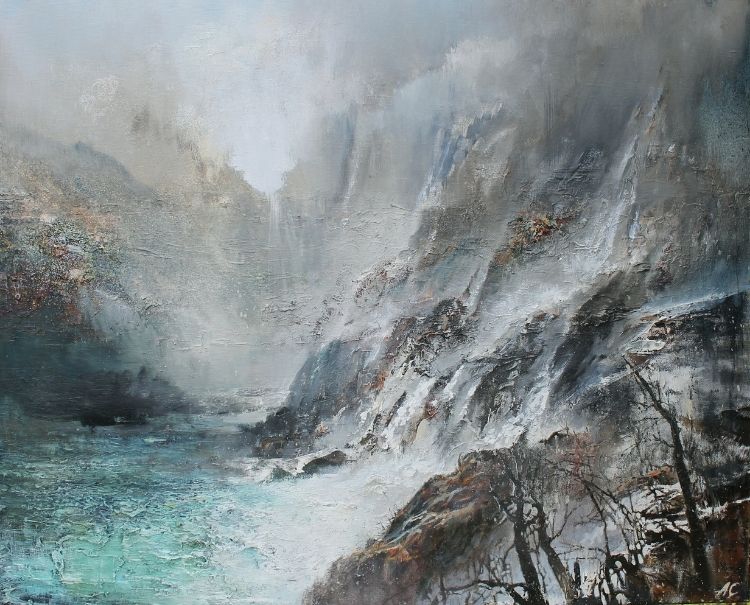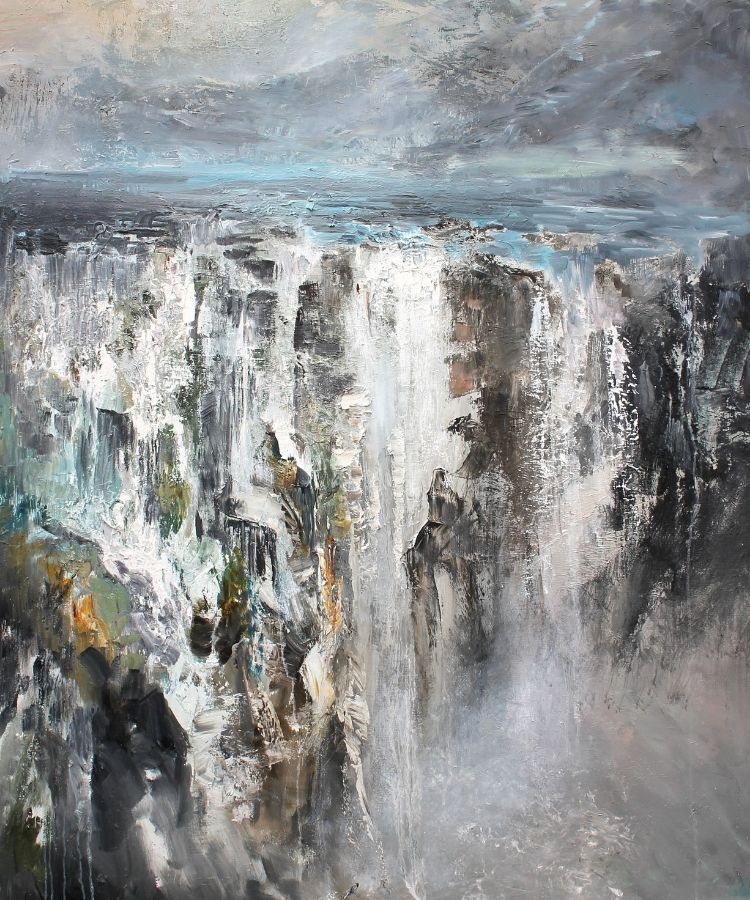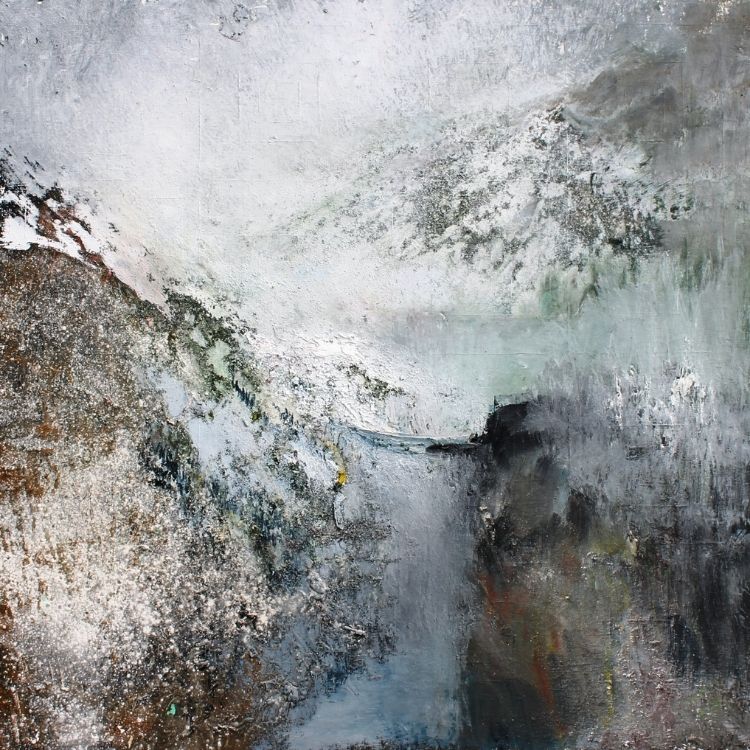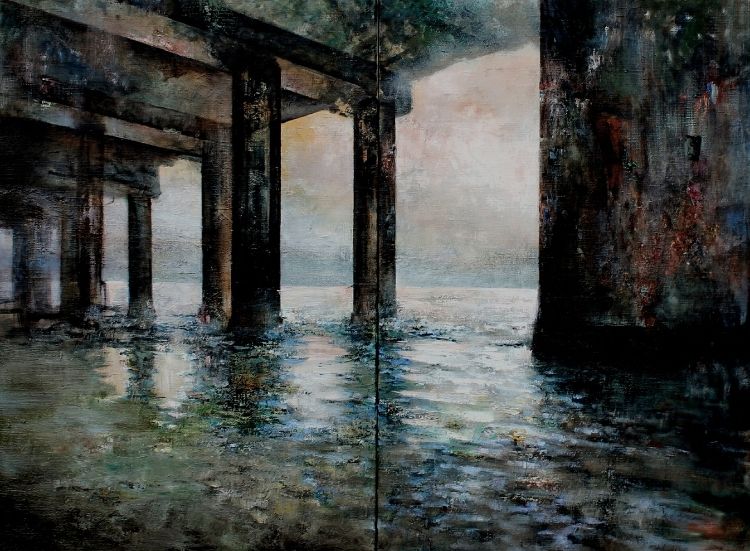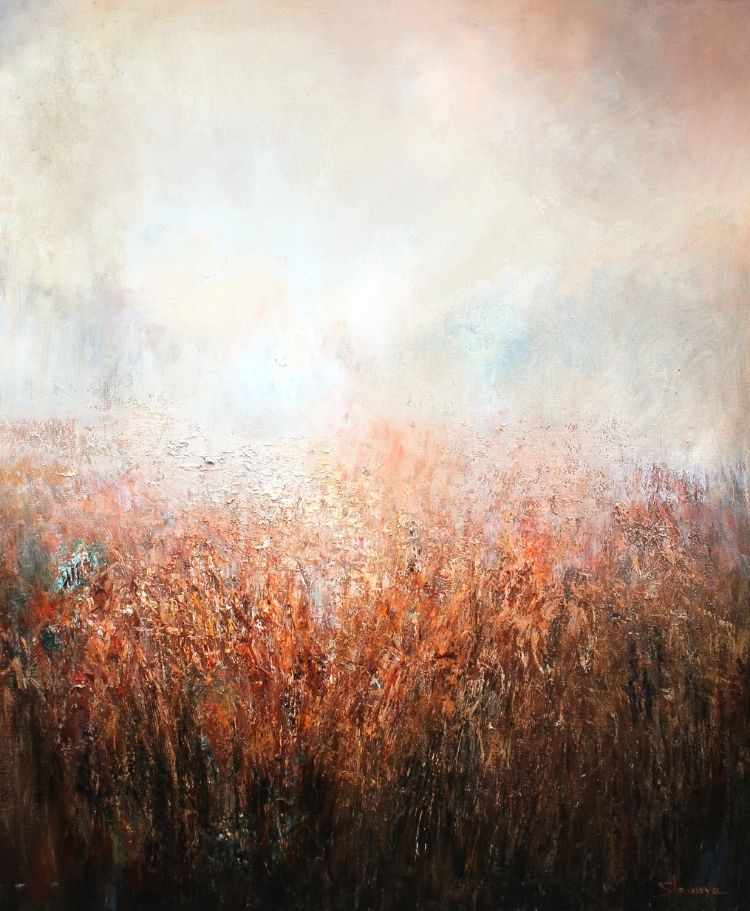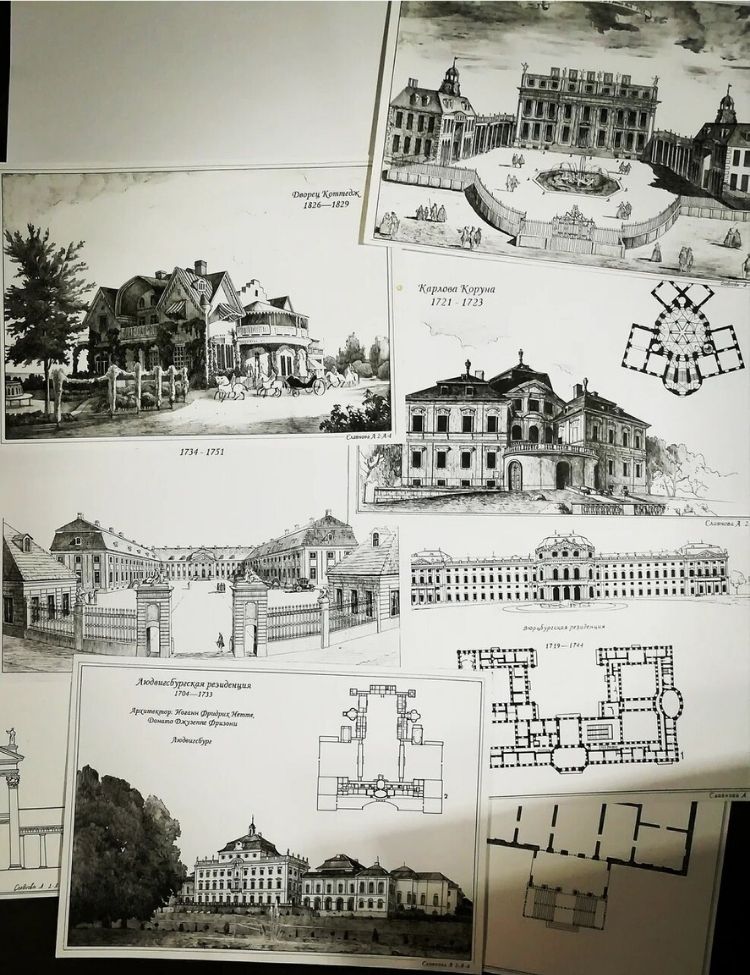Anastasia Slavnova: «The most interesting and fascinating pictures are created by the power of imagination»
Where is the line between the craft of an artist and architect, and how does the passion for painting help you see and design structures? We have talked with Anastasia Slavnova, a graduate of Saint Petersburg State University of Architecture and Civil Engineering, an illustrator and artist, whose works are exhibited in galleries both in Russia and abroad and purchased for private collections. Read the interview about the beginning of her creative career, the artist’s everyday life, her work in the field of abstract painting, as well as about her studies at SPbGASU and what the Faculty of Architecture has taught her.
Anastasia Slavnova. «Embraced by the sun»
Anastasia Slavnova
– Anastasia, can you please tell why you decided to get architectural education and chose SPbGASU?
– Since childhood, I was fond of painting, but did not make a choice in favour of art education, as I didn’t want to experience the “wing clipping” and be taught to draw in the same way as all other students in the course. Often, the main task of graduates of art universities is to retrain and find their own style, since it is not so much the academic technique that is valued in painting as the originality and uniqueness. Therefore, my choice fell on architecture. When I first came to SPbGASU, I felt at once this was the place where I wanted to study. I enjoyed the students' projects and the very atmosphere of this university.
– What are your brightest memories of the university teachers, subjects and projects?
– I think the most memorable discipline was Architectural Design: sleepless nights, then nervous anticipation in the audience. Clausura sketching tests with a 40-minute time limit – this time was given for inventing and drawing a small project. All this has taught me to work under tight deadlines and not to be afraid of difficult tasks.
Speaking of my teachers, I certainly should mention Yury Brusnikin. Once, after submitting my sketch, he wrote lots of critical comments on my work. It seems there was something in his text about my hands that had to be torn off, and that someone was turning in the grave... After that I pulled myself together, and the results of my following work were highly appreciated by all teachers. It was a project of a private house, perhaps the only one with which I was completely satisfied.
Many of my warmest memories are associated with Georgy Kelkh. At the preparatory courses, it took him literally a few lessons to teach us the basics of the composition, and his lectures on the History of Architecture were always really interesting.
– Would you say that the skills acquired at university help you in your career? What are you currently doing?
– At one of the lectures, we were told: “Do you know how the vision of an architect differs from that of an artist? The artist conveys an image, while the architect sees the structure under this image." Despite the fact that there is a lot of mist and abstract strokes in my works, I always try to show dominant nodes and not to break the structural details. To do this, you need to have a clear vision and spatial imagination, the things I learned at the Faculty of Architecture.
Presently I devote all of my time to painting, taking orders and preparing new personal exhibitions. This year, despite the difficult situation, four exhibitions of my works took place. The last one, “Alone with the Elements”, was held in Moscow in the exhibition hall of the ARTPLAY Design Centre, then in the cultural centre of Peterhof, and afterwards my exhibition including over fifty paintings went to Perm, my hometown.
– Have you worked in your profession after university graduation, or did you completely switch to painting?
– I cannot say I’ve switched to painting, since it has been with me all my life and still does not let anything else into it, including architecture. Specifically, I have never worked as an architect, except for designing my own house.
– What do you feel when recalling your first exhibition? What was it about?
– My first personal exhibition took place when I was twenty years old – already an adult person, but as an artist, of course, still quite immature. Therefore, it evokes mixed feelings. On the one hand, it was a great event for me: only after the first exhibition I realized I was an artist, even though I had already sold my paintings before. But on the other hand, now I understand that the theme was rather naive – "Around the World", and the works presented there barely fitted into the concept.
Everything comes with experience here: no one will teach you how to hold exhibitions, so you have to go through trial and error.
– Let’s talk about your professional everyday life. An artist's work is often romanticized. There is a stereotype that artists spend most of their time painting in the studio. However, there is also a task of communicating with curators, galleries, customers and other kinds of "invisible" work that you cannot avoid. What is your everyday life like?
– I do spend most of my time painting, especially before an exhibition. When there are a lot of orders, I also hardly leave the workshop. It is rather difficult to describe my everyday life, as it depends on the specific period. When preparing an exhibition, I spend much time thinking over the concept and creating new works, and the next steps include active communication with the curator, drawing up a press release, preparing labels, posters, a catalogue and the paintings themselves for hanging. When I am not busy with that kind of activities, I have quite a free schedule, fulfilling painting orders and visiting diverse art exhibitions and vernissages.
Communication with customers does not take much time: my clients are usually very busy people, they do not like to ask many questions, and prefer to trust the artist.
I try not to make any plan for the day, not to fix time for work and rest. Painting does not tolerate mechanical work, and a work of art can “die” after a few approaches "because it is necessary”.
Anastasia Slavnova. «Illumination»
– Your style of painting is close to abstract and figurative art. As a rule, such painting has a rather narrow circle of admirers: these are usually people with education in humanities and art history, while the general public often treats this style with mild disdain, because they do not understand it. In my opinion, abstract art is a cipher, behind which there is an immense field of meanings. And what is the meaning of such painting for you?
– In my works, you almost cannot find pure abstraction: there is always an intuitive hint suggesting a plot. Small details are often symbolic and carry the principal meaning. The understatement invites the viewer to an internal dialogue with the author, to reflection. The most interesting and fascinating images are generated only by our imagination. When the imagination is the "co-author" of the artist's painting, understanding the meaning becomes a captivating process.
Abstraction directly affects feelings, helps to convey the state of the artist’s mind. For example, when clearly depicting a wave on canvas, the artist tries to convey the state of the nature, but at the same time he himself is not captured by this passion, this seafoam rush. The artist applies the paint layer systematically with a small brush. Another thing is when the master takes the largest brush and scribbles the paint as if he himself were this wave that is about to burst out of the canvas. The impressions of these works will be completely different. Of course, I do not mean that the first one is worse, but it will simply be different: admiration for the painstaking skilfulness of the artist, but hardly immersion in his experiences.
As art critics say, at the first stage of interaction with painting, a person experiences the joy of recognizing the plot and perceives only understandable images. Fortunately, now I am increasingly faced with a well-prepared audience, viewers who want to think, to be surprised and discover something new.
{gallery name="СЛАВ122020"}
– Applicants entering the Faculty of Architecture are often interested how they can broaden their creative horizons to make both the entrance exams and the studies easier. What recommendations could you give based on your own experience?
– It seems to me that for expanding your horizons, you need to communicate a lot with the people who have already achieved a lot in the area of your interest. There are plenty of such opportunities in Saint Petersburg: lectures, presentations, exhibitions where you can meet experts and specialists in different areas and get inside the creative environment. From such communication, you can get a tremendous charge of emotions and inspiration, which is so necessary at the start of your creative path. Recently, the situation with live communication has become complicated, but even under such circumstances you can find it if you know what you are searching for.
Text: Alexandra Podolnikova
Images provided by Anastasia Slavnova: http://slavnova-art.ru/
✔ Learn more about the Faculty of Architecture and the study programmes offered






